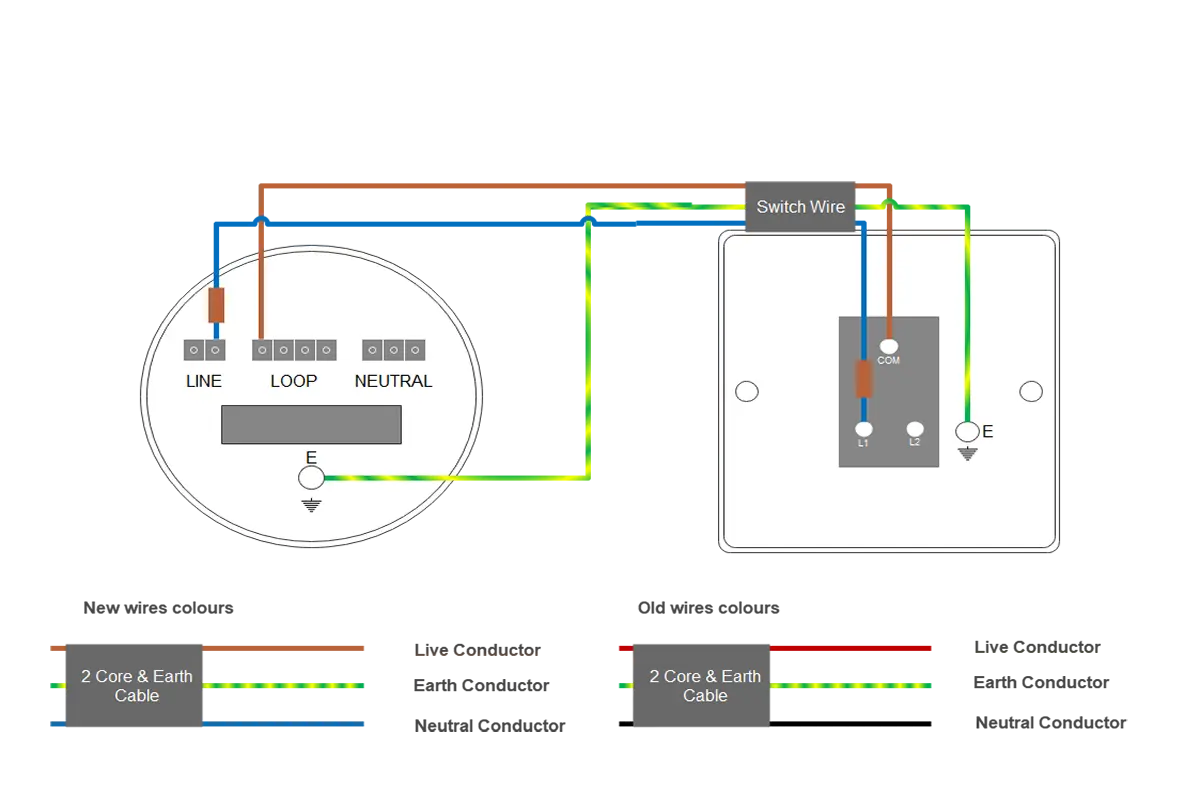Light switch installation might seem daunting, but with the right knowledge and careful attention to safety, it’s a manageable DIY task. In this comprehensive guide, I’ll walk you through the exact steps to install or replace a single light switch in your home, ensuring compliance with UK electrical regulations.
In this blog post, we will cover everything from essential tools and safety precautions to step-by-step installation instructions, common pitfalls to avoid, and when to call a professional electrician.
Table of Contents
Key Takeaways
To install a single light switch in the UK, first turn off power at the consumer unit, remove existing switch (if replacing), connect the brown live wire to COM terminal and switched live wire to L1 terminal, secure earth wire if present, then attach faceplate and test. Always verify power is off using a voltage tester before starting work.
What Tools Do You Need to Install a Single Light Switch?
Before starting your light switch installation, gather these essential tools:
- Voltage tester or multimeter – Critical for safety verification
- Insulated screwdrivers (both flathead and Phillips head)
- Wire strippers and insulated pliers
- New light switch (standard or dimmer)
- Wall screws (typically included with switch)
- Electrical tape
- Spirit level for precise alignment
Safety First: Essential Precautions
Safety should always be your primary concern when working with electrical installations. Here are the critical safety measures:
- Power Isolation: Always turn off the relevant circuit at the consumer unit
- Voltage Testing: Use a proper voltage tester to confirm power is off
- Lighting Up the Work Area: Ensure adequate lighting and a clear workspace
- Tools: Use only insulated electrical tools
- Knowledge: Understand UK wiring regulations before starting
Step-by-Step Installation Guide
1. Preparing for Installation
Before touching any wires:
- Locate your consumer unit
- Switch off the appropriate circuit
- Test the light switch to confirm power is off
- Use your voltage tester for secondary verification
2. Removing the Existing Switch
When removing an old switch:
- Remove faceplate screws carefully
- Pull switch away from wall gradually
- Perform secondary voltage test on exposed wires
- Document existing wire connections (consider taking a photo)
- Label wires if necessary
3. Understanding UK Wiring Colours
Modern UK wiring follows this colour scheme:
| Wire Type | Old Colour | New Colour | |
| 1 | Live | Red | Brown |
| 2 | Neutral | Black | Blue |
| 3 | Earth | Green | Green/Yellow |
4. Making the Connections
Follow these precise steps for wiring:
- Live Wire Connection
- Connect brown (live) wire to COM terminal, or red wire as old colour.
- Ensure tight connection with no exposed copper.
- Switched Live
- Connect second blue(switch live) wire to L1 terminal and make sure use brown sleeve, or black wire as old colour.
- This wire carries power to the light fitting as switch live
- Earth Wire
- Connect green/yellow wire to earth terminal
- Mandatory for metal faceplates
- Optional for plastic switches
5. Final Installation Steps
- Position wires carefully in back box
- Avoid pinching or damaging cables
- Mount switch straight using spirit level
- Secure faceplate with appropriate pressure
Common Installation Mistakes to Avoid
- Loose Connections: Ensure all terminals are properly tightened
- Exposed Copper: No bare wire should be visible outside terminals
- Incorrect Wire Identification: Double-check wire colours and functions
- Over-tightened Screws: Can damage switch housing
- Insufficient Testing: Always verify operation before finishing
Special Considerations
Dimmer Switch Installation
When installing dimmer switches:
- Verify compatibility with your lighting
- Check maximum load ratings
- Ensure adequate ventilation
- Follow manufacturer-specific instructions
Old Property Considerations
For properties with older wiring:
- Check wire colours against old standards
- Test connections thoroughly
- Consider upgrading to modern standards
- Document any variations from standard setup
When to Call a Professional
While DIY installation is not recommended in the UK, contact an electrician if:
- You’re uncertain about any step
- The wiring doesn’t match standard configurations
- You notice damaged or deteriorating cables
- The installation requires certification
- Multiple switches control one light
Final Thoughts
Installing a single light switch requires attention to detail and respect for safety procedures. While it’s a manageable DIY task, never proceed if you’re unsure about any aspect of the installation. Remember, proper installation ensures not just functionality but the safety of your home’s electrical system. Consider this guide as your starting point, but always prioritise safety over convenience.
Related post:

